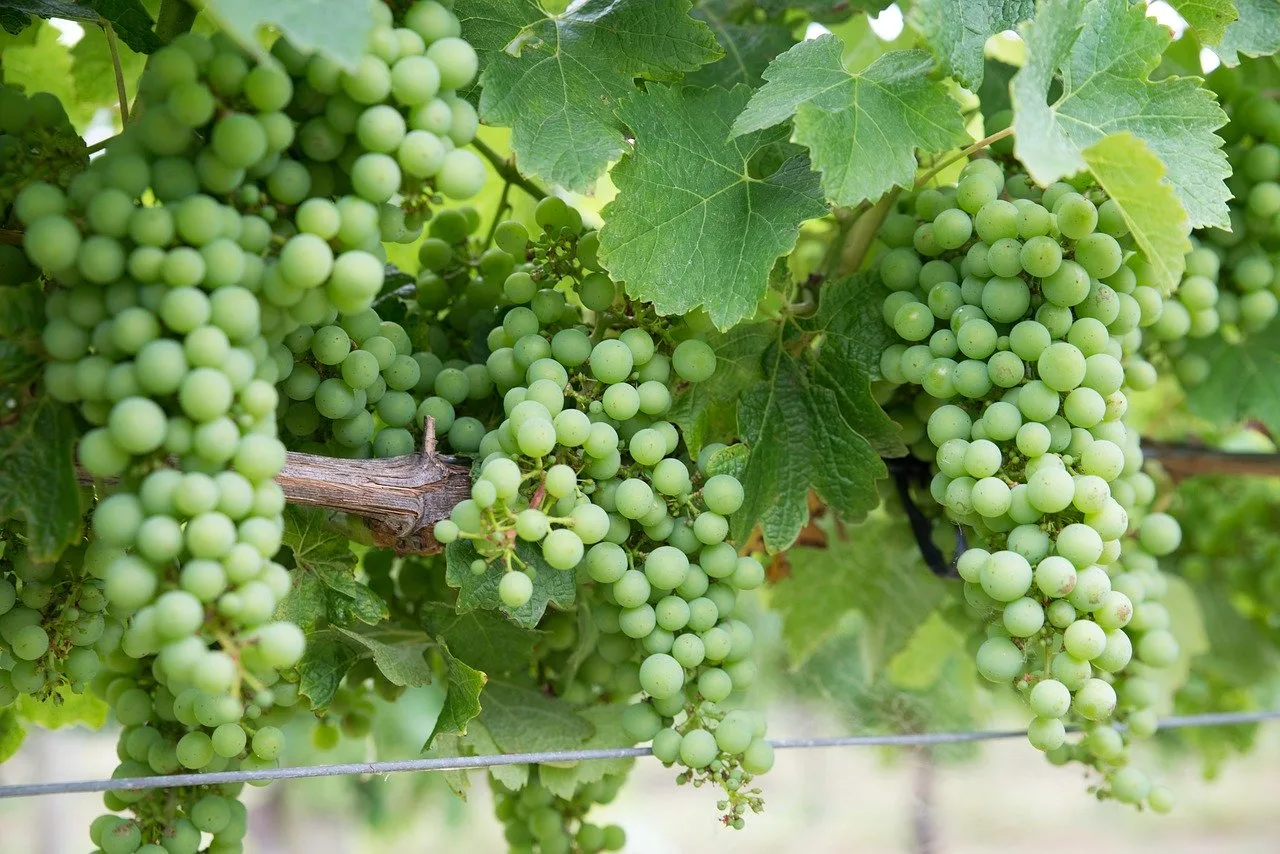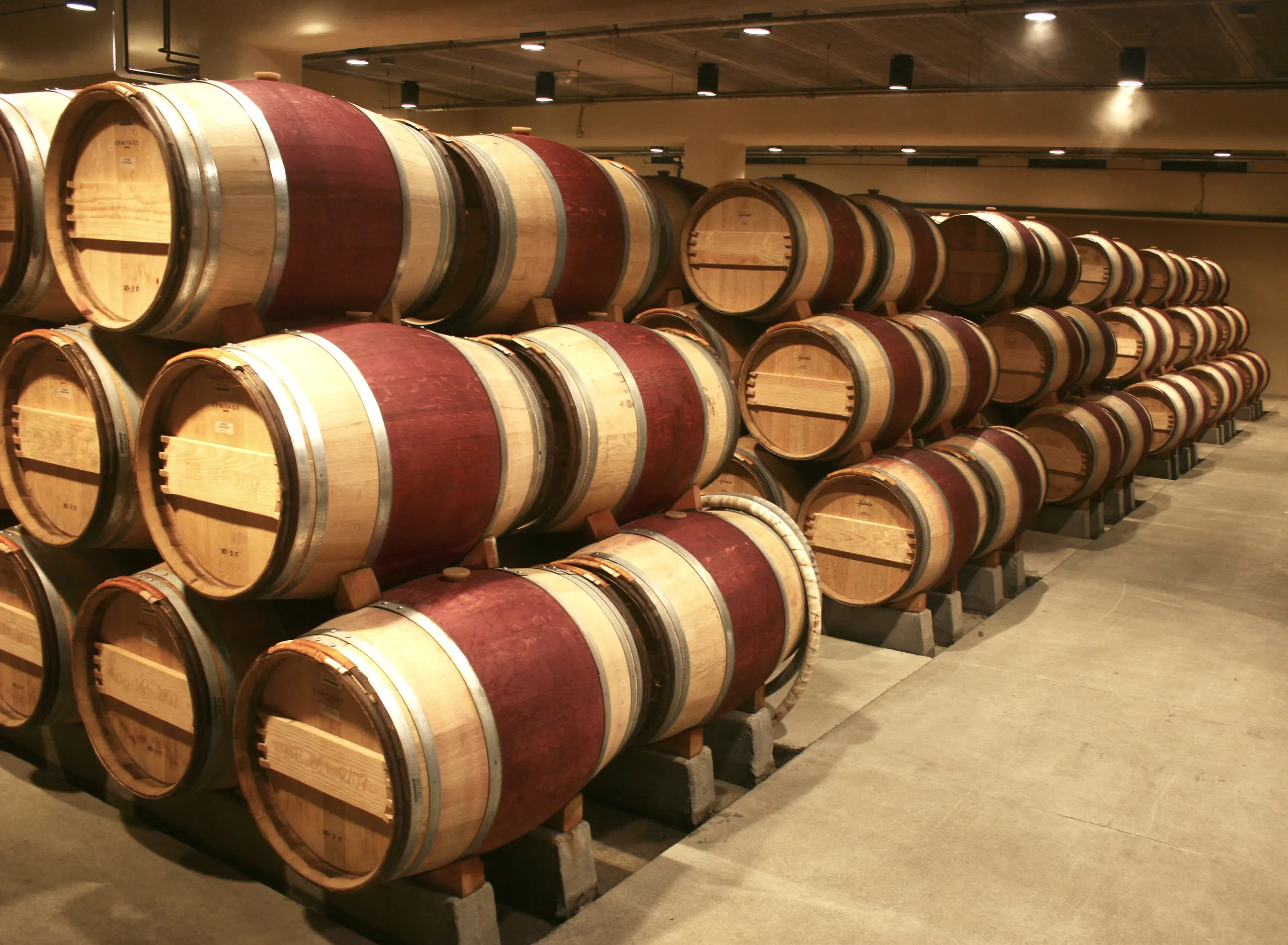Wine… we love to drink it, but how often have you stopped to wonder how that magical juice got from the vineyard to your glass?
Winemaking is nuanced and can be complicated — people have been doing it since 5,400 BC, so there are naturally a ton of different methods.
That said, there are some basic steps and fundamentals to winemaking that every lover of the vino should (and can!) be well-versed in.
This guide breaks down how wine is made in 6 simple steps and should just take 10 minutes to read, so let’s get to learning!
1. Pick The Grapes

First thing’s first: winemakers harvest their grapes when they’re the proper amount of ripened.
Harvest
Harvest season is generally between August and October, and getting the grape to the perfect level of ripeness can be tricky. You want the grape to have a balance of sweetness and acidity, which will translate beautifully in a wine. You don’t want them too young and acidic, or to let them go too long and rot or be overly sweet.
Some old-school winemakers pick the grapes by hand, while others have adopted the more modern practice of using a mechanical harvester.
Grape Varietals
In terms of grapes, you have red grapes that make red wine — such as Pinot Noir and Merlot — and white grapes that make (you guessed it!) whites — like Chardonnay or Pinot Blanc. Rosés are made from red grapes (sometimes they throw some white grapes in the blend, too) and sparkling wines are made with white and/or red grapes.
2. Sort the Grapes
Next winemakers sort out the grapes of lesser quality. You can either sort by bunch, individual grape, or both! The goal is just to get rid of anything gross or rotten before the grapes are crushed.
3. De-stem and Crush the Grapes
After picking out the bad grapes, usually the grapes are de-stemmed. There are also wines that are made with the stems intact, which many say gives the wine a more earthy, rustic taste.
Some de-stemming machines just remove the grapes from the stem, while others both de-stem and gently crush the grapes.
Regardless, once de-stemmed, the grapes need to be crushed. When they’re crushed, they are still whole berries, but they’re just opened up so the juice can “run free” and interact with the skin of the grape. This juice is what winemakers call “must”.
Now, this is the part of the process where white wines take a different journey than reds.
White Wine
After being crushed, the rest of the juice is pressed out of white grapes (yes, there is a difference between the terms crushing and pressing!), most of the time by a machine, and the skins are removed.
The juice is usually then pumped into a tank where it will sit for a couple of hours until any extra debris or stems fall to the bottom of the tank.
Then, the clearer juice at the top is moved to a different tank or barrels for primary fermentation. This movement of wine from one vessel to another to remove extra sediment is called racking, and it often happens multiple times throughout the winemaking process.

Red Wine
On the other hand, once red grapes are crushed, they are NOT pressed and their skins are NOT removed.
The crushed red grapes with their skins intact are instead immediately put in a vessel for primary fermentation. The skins are left on because they give red wine color, tannin, and extra flavor.
4. Primary Fermentation
Fermentation is the process of turning sugar into alcohol. The entire process takes about two to three weeks, with the primary stage taking three to five days and the secondary stage taking one to two weeks.
Add Yeast
During primary fermentation, you add yeast to the juice. This yeast is what eats up the sugar and converts it into alcohol.
Some winemakers use wild yeasts that occur naturally from the grapes or the terroir*, while others use cultured yeasts, which give the winemaker more control over fermentation.
Yeast is far more active during primary fermentation — about 70% of the sugar will be converted to alcohol in this three to five day period.
*Terroir is simply the natural environment where a wine is made. This includes the soil, climate, elevation, etc. — all of which give the wine its unique characteristics.
“Punch Down” Red Wine Skins
Over the course of fermentation for red wines, carbon dioxide will push the grape skins to the top of the tank and the winemaker either presses the skins back down into the juice (aka: “punches down”) or pumps the juice (aka: “pumps over”) back over top of the skins, also known as “the cap”. This ensures there’s plenty of skin contact with the juice.

5. Secondary Fermentation
Now that most of the sugar has been eaten up by the yeast, many winemakers will rack the wine (aka: move it to a different container) in order to filter out any dead yeast sediment floating around. This is when secondary fermentation takes place.*
They’ll then wait the one to two weeks it takes for the remaining sugar to be converted to alcohol.
If the winemaker is looking to make a sweeter or off-dry wine, they will stop the fermentation process early before all of the sugar becomes alcohol.
*Secondary fermentation is NOT the same as second fermentation, which is when fermentation is re-started, usually by introducing additional yeast. This is how Champagne is made, but in general second fermentation is not intentional and is a bad thing to happen when making wine.
6. Aging and Bottling

People have written thousand page books on wine aging, so consider this is a super simplified version that hits on the most important points.
Once fermentation is complete, the juice will be put in an aging vessel.
Red grapes will first be pressed, have the skins removed, and racked before being put in the aging vessel, while whites will be directly moved to the new container.
Aging Time
You can age a wine for years or for months. Red wines are usually aged at least 1.5 to 2 years, while whites can take only a couple of months.
Type of Vessel
There are a ton of options for vessels, all of which will have a huge impact on the final result: stainless steel tanks, oak barrels (could be American, French, “neutral”, used, charred, etc.), concrete eggs, and more.
This is an important choice to make as it will really influence the texture and taste of the wine. You can even put the juice into multiple different vessels and then blend them together at the end of the aging process — it really just depends on the winemaker and their end goal.
Bottling
When the winemaker determines the wine has been adequately aged, they’ll put it in bottles and then it’s ready to be sold to the public!
And that’s a wrap!
I hope this guide helped clear up any questions you had about winemaking and maybe inspired you to learn even more about the process!
I’m personally content with just reaping the benefits of the final product, but we always need winemakers out there to keep the juices flowing from the vineyard to our glasses 😉
Read Also:
- How To Pair Full-Bodied, Medium-Bodied, And Light-Bodied Wines With Food
- Everything You Need To Know About The History Of Champagne In 5 Minutes Or Less
- How To Taste Wine With Food For Beginners: A Quick & Easy Guide To Make You Feel Like Wine Pro
- 10 Reliably Good Wines For $15 Or Less That You Can Find Anywhere